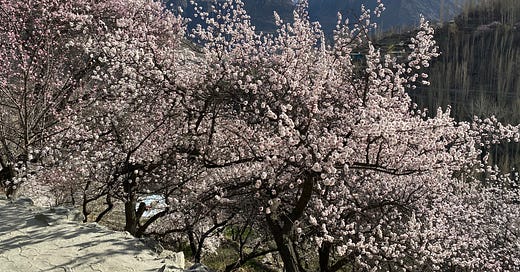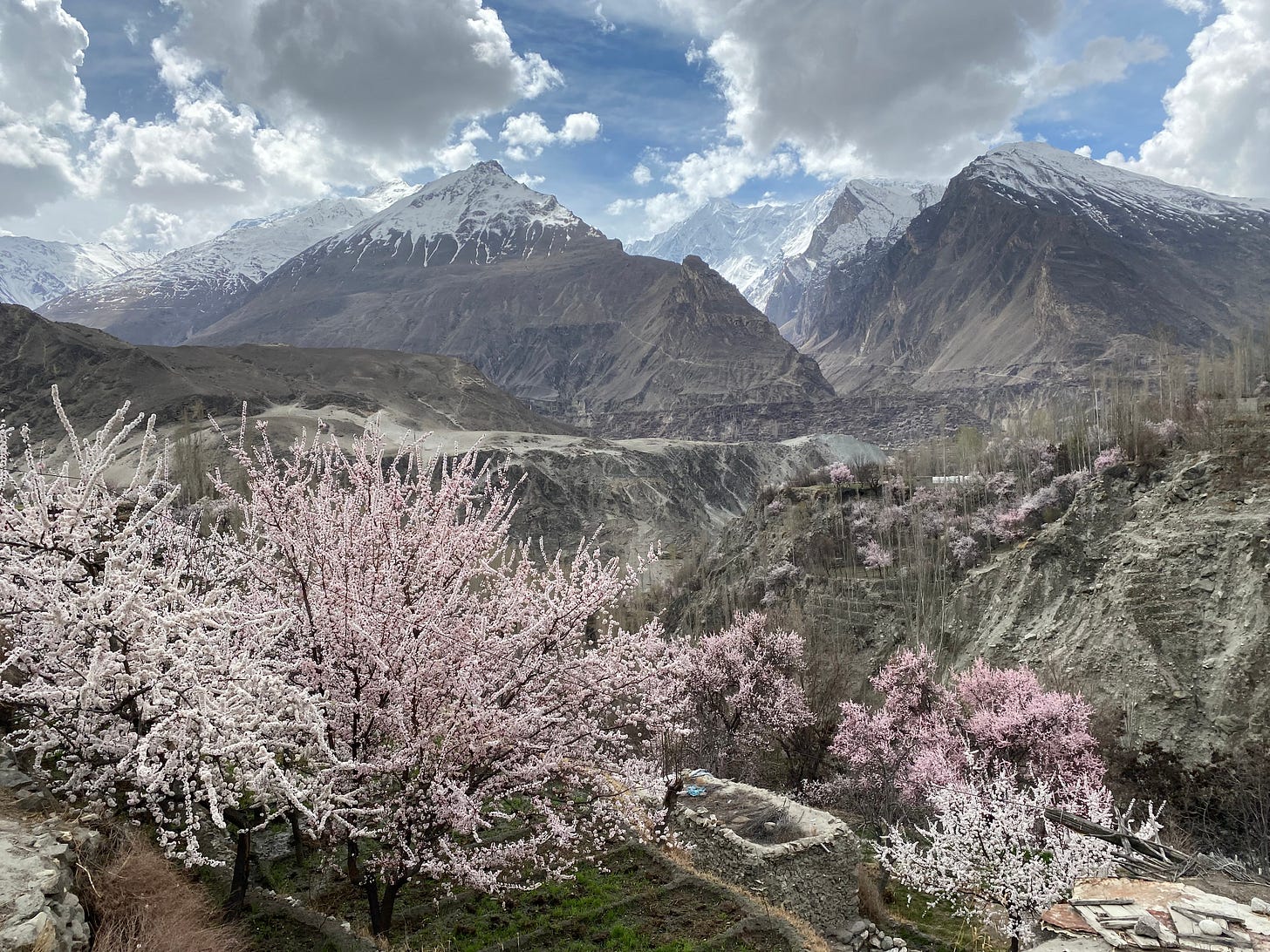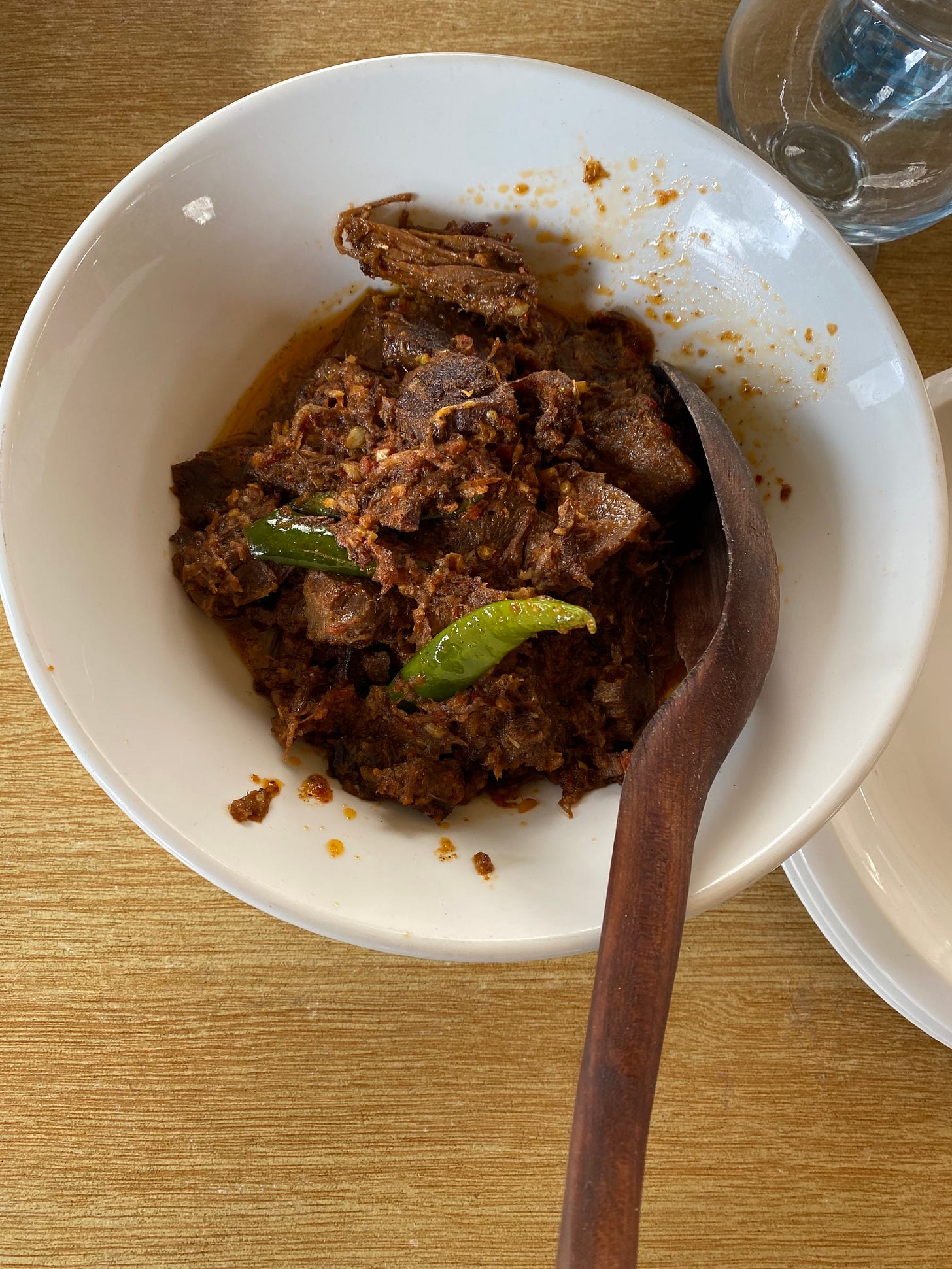Hi there,
My favorite thing about spring is just how confusing it is. It fully commits to teasing a perfect postcard of frosts melting, leaves budding, the cold completely dissipating…and then hours later completely destroys that romantic fantasy with a temperature drop hovering right above freezing. Every year, we are newly shocked when it starts flurrying snow in April. How is this happening?! we all exclaim collectively. We didn't sign up for this!
What I really respect spring for is consistently catching us humans off guard. No matter how far into life we get—and climate change aside—we remain in denial that weather wildness is the name of spring’s game. Spring has sprung...into chaos, and that element of surprise is a testament to our annual amnesia.
Recipe developers in my inbox and foodie influencers on social media are touting peas and asparagus and pasta primavera, but as of last week I was still making winter soups to nurse a cold. Cold and colds aside, spring has also meant basking in Virginia azaleas and New York camellias, rhododendrons, and daffodils, and spotting a woodpecker in the Brooklyn Botanic Garden dutifully drilling the winter away.
A couple springs ago, I witnessed blossoms that swiftly moved me to tears: in a place where snow and blossoms together presented anything but an oxymoron. We were in the Hunza Valley, among the Karakoram mountains: the second biggest mountain range in the world and home to the second tallest mountain in the world, K2.
Just a few nights earlier, we had been celebrating my cousin Sairah and Love's wedding at near sea level, in Lahore. Instead of embarking on a relaxing honeymoon, the newly weds chose to orchestrate an epic expedition for their international guests from America, Sweden, England, and elsewhere, to a part of Pakistan that was no small feat to reach. For two days, we were on the road—and not just any road...but the Karakoram Highway, cutting through mountain passes and taking us higher and higher into the sky—ultimately reaching an elevation of over 15,000 feet. That trip itself is a whole other story. [My cousin Naila took this route even more recently—making for yet another story, and one you can read in her own words!]
At last, we reached a region unlike anything I'd seen on my handful of visits to Pakistan. No words or photos can do the majesty of these mountains justice. As someone on our trip noted, the sensation was reminiscent of when you see grand mountain ranges outside your airplane window, except that you’d somehow suddenly stepped outside of the plane. That's how “in the clouds” and otherworldly these peaks looked.
Our driver Adeel had mentioned that we would be seeing cherry blossoms soon, and sure enough, beautiful flowers of white and pink began to crop up everywhere we looked, stunningly juxtaposed against the snowcapped mountains. Little did we know this was just the beginning of our breathtaking vistas.
As we approached Hunza Valley, the mountains—again, at the base of some of the biggest in the world—were completely dotted with trees achieving peak blossom: peaks on peaks.
We hadn't even left the bus, and perhaps it was merely due to the high elevation, but I was already silently tearing up. It wasn’t until my fellow travelers and I spoke later that I learned this rush of emotion was a collective reaction to sheer objective beauty. Turned out many of us had been crying to ourselves in our seats, scattered throughout the vehicle, having our own personal moments of revelation.
Our visit to Hunza Valley coincided with the spring equinox, and the holiday Nowruz: a celebration of spring. And indeed, the streets were decked out for this holiday—naturally so—as evidenced by the beautiful cherry- and apricot-blossom lined pathways. In the city of Karimabad, people were off from work and school for the day. There was a light festive feeling in the air, with children playing in the streets and enjoying themselves on swing sets.
We ate lunch at a restaurant called Hidden Paradise, close to the old eighth-century Baltit Fort complex. Some of the most nourished I've ever felt was after meals in Hunza. With walnuts, apricots, and other local fruits and nuts making up the bases of soups, main dishes, teas, and desserts alike, meals were light and wholesome—and indisputably delicious.
On this day of Nowruz, I ate a noodle broth soup, called daodo. I hadn’t necessarily expected to eat noodles on this trip, but considering we were only hours from the Chinese border and China’s Xinjiang province, perhaps it shouldn't have been the biggest surprise. I had a couple different versions of daodo over a few days, and the variation at this restaurant was called haneetze daodo, with a broth made of ground apricots.
We shared fresh stuffed breads, one with cheese (hurus barikutz) and the other with crushed apricot kernels (haneetze barikutz).
One of the main dishes we shared was yak karahi. I was familiar with the “karahi” or wok-like style of cooking, having grown up eating chicken karahi, usually featuring a tomato base. The yak meat option, however, was a definite first.
Other than the word “karahi” ringing a bell, most of the other offerings on the menu were in the local language, Burashaski—completely new words and names for almost all of us. We ended our meal with an incredible walnut tea, infused with a walnut oil that gave it the fattiness of a dairy creamer with a dominant and unique flavor. We shared ultan coq, which the restaurant advertised as their “energy bar,” made of a mix of walnuts, mulberries, apricots, almonds, linseeds, and local honey: the ultimate snack for any high-elevation jaunt.
As if the meal itself wasn't satisfying enough, we enjoyed it among the presence of blossoming trees, tangible symbols of the day’s celebrations.
At a café that evening, we lost ourselves—or at least I did—in slices of cake made from local honey and walnuts. Incidentally, this experience of tea and cake was accompanied by an earthquake. While its epicenter was nowhere near us, the earthquake tremors triggered a nearby avalanche and a subsequent windstorm that howled down our street. The proprietors of the café calmly directed us outdoors when the tremors first began, and, minutes later—and just as calmly—told us to go back inside for the avalanche-related windstorm about to come our way. It subsequently battered against the café windows, which we witnessed from indoors—and that was that.
As we walked to our hotel, hearts and bellies fully satiated from the day, a group of festive musicians continued jamming—earthquake, avalanche, and windstorm causing no more than a mere technical glitch—truly celebrating the uncertainty that spring will always bring.
Have a wonderful week, and until soon,
Insia
P.S. A very Happy Birthday to my father-in-law and loyal newsletter reader, Matt!













I felt like I was there Insia!! Peaks amongst peaks and wonderful tastes and sights along the way. Thankyou.
Loved diligently drilling away winter❤️❤️❤️
This was delightful, all the novel foods, and the breathtaking beauty that moved everyone to tears! The embedded link to Naila's slightly different adventure to the region was a surprise as well!